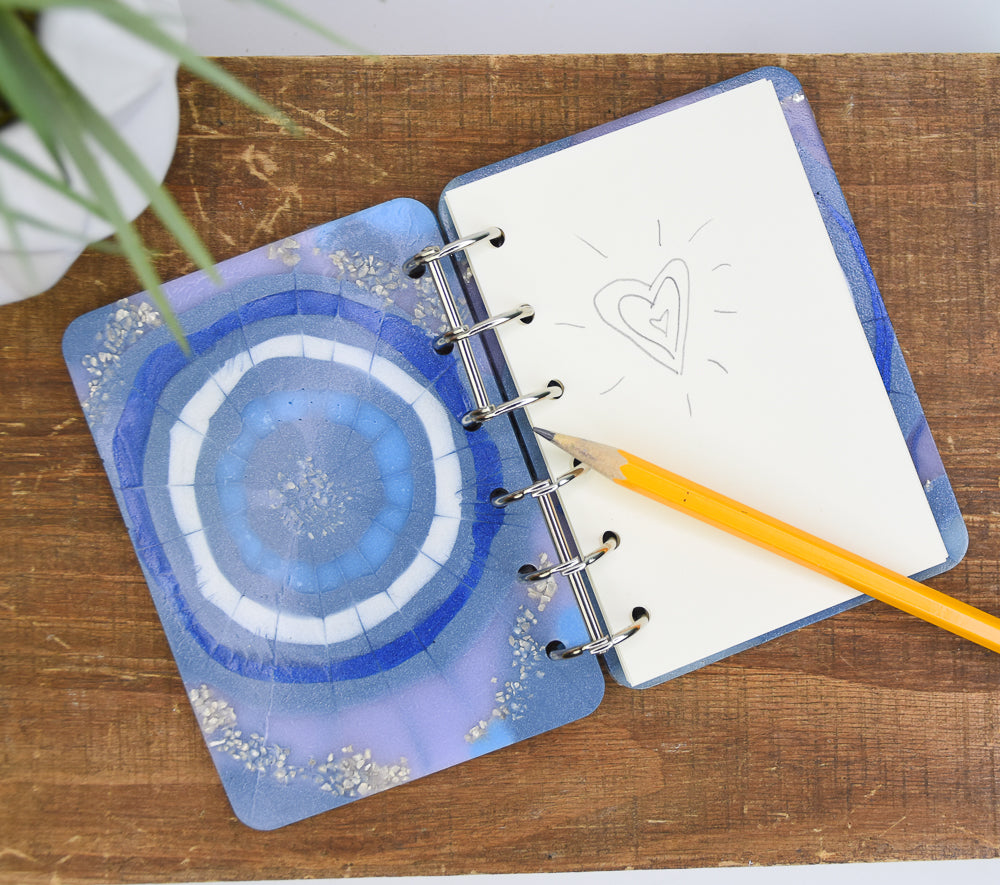Liquid Sculpey® Marbled Mini Notebook
Liquid Sculpey® Marbled Mini Notebook
Read More
Super charge your notes with this gorgeous and dynamic book cover featuring Liquid Sculpey! Add a bit of bling as well to create even more drama.
TIME TO COMPLETE:
2.5 Hours to make, bake (bakes 4 times), and assemble
Read Less
ADDITIONAL SUPPLIES
- Paper towel
- Silicone notebook cover mold
- Ring binder kit
- Paper insert kit
- Heat gun
- Dish cloth
- Large silver flake glitter


Project Instructions
Step 1
Step 2

Step 3

Step 4

Step 5

Step 6

Step 7

Step 8

Step 9

Step10

Step 11

Step 12

Step 13



